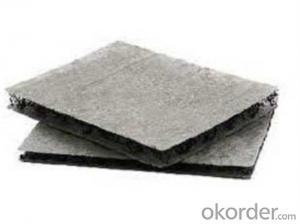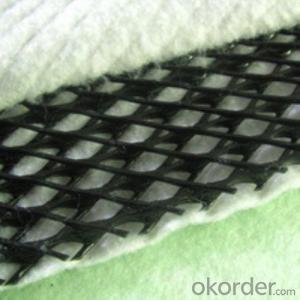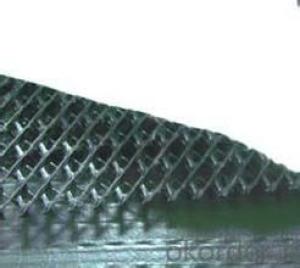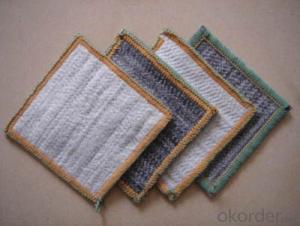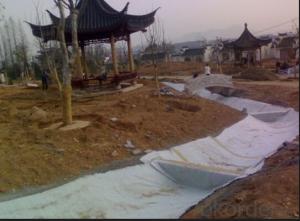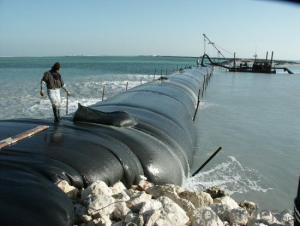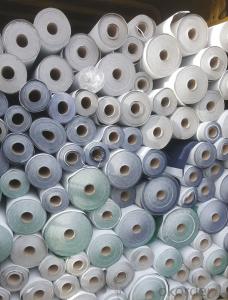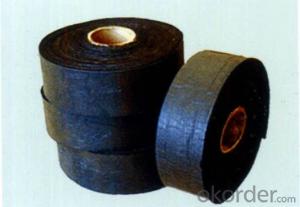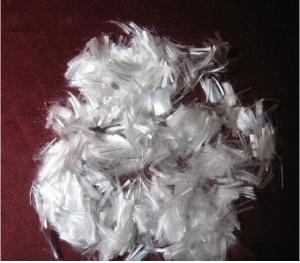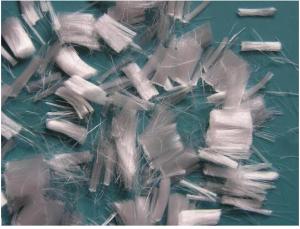Composite Soil Drainage Network for Architectural Engineering
- Loading Port:
- Qingdao
- Payment Terms:
- TT or LC
- Min Order Qty:
- 8000 m²
- Supply Capability:
- 100000 m²/month
OKorder Service Pledge
OKorder Financial Service
You Might Also Like
Composite Soil Drainage Network for Architectural Engineering
Description Of Composite Soil Drainage Network for Architectural Engineering
Composite material is a general term for the synthetic materials used in civil engineering. As a kind of civil engineering materials, it is to synthetic polymers, such as plastics, chemical fiber, synthetic rubber as raw material, made of various types of products, placed inside the soil, surface, or various kinds of soil play to strengthen or to protect the soil. The application of the technology of soil engineering synthetic materials will be divided into the type of the material of the soil, the soil, the soil, the special material and the composite. The special materials for the special materials include the soil engineering film bag, the soil engineering net, the geotechnical mesh pad, the soil working chamber, the soil texture, the bentonite mat, the polystyrene foamed plastics (EPS), etc.. The composite material is made from the above mentioned materials, such as composite coating, composite material, composite material, composite waterproof and drainage (drainage), etc..
Main Features of Composite Soil Drainage Network for Architectural Engineering
The advantages of the composite is that the weight is light, and the overall continuity is good (can be made into a large area of the whole), construction is convenient, high tensile strength, corrosion resistance and resistance to microorganisms. The disadvantage is that, without special treatment, anti ultraviolet ability, such as exposure to ultraviolet radiation, is easy to aging, but if not directly exposed, the anti aging and durability performance is still high.
Applications of Composite Soil Drainage Network for Architectural Engineering
1, for the stability of highway, railway roadbed.
2, used to bear the weight of the embankment and shallow water treatment.
3, used to prevent the landslide and the load of the gravity of the hybrid retaining wall.
IMages of Composite Soil Drainage Network for Architectural Engineering
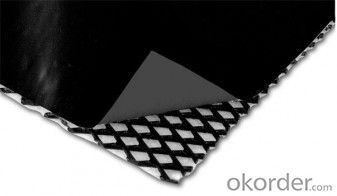

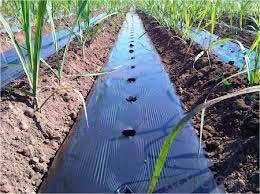
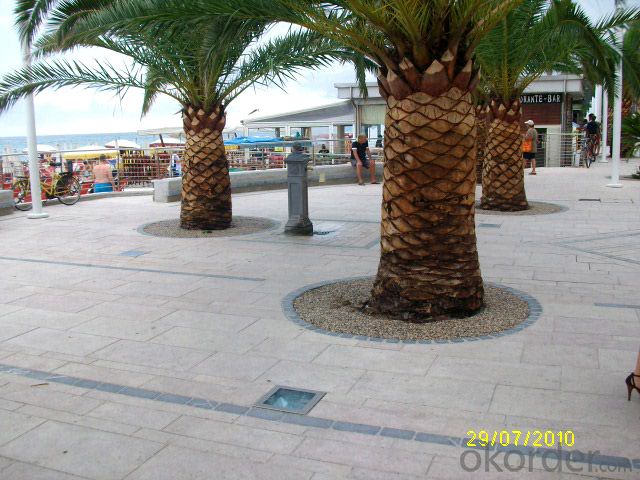

FAQ:
1. What are we supplying?
We are specialized in producing .geotextile , geocell, geogrid, geomembrane
2. How Many years experience do we have?
We have been exported to more than 15 countries in the past 10 years.
3. How long do we usually reply your request?
We always reply our customer within 12 hours.
- Q:Can earthwork products be used in green roof construction?
- Yes, earthwork products can be used in green roof construction. Earthwork products such as soil, compost, and lightweight growing media are commonly used to create a suitable substrate for planting on a green roof. These materials provide the necessary nutrients, drainage, and water retention properties required for successful green roof vegetation.
- Q:What are the advantages of using geotextile tubes for coastal protection?
- Geotextile tubes offer several advantages for coastal protection. Firstly, they are cost-effective compared to traditional methods such as seawalls or rock revetments. They require less material and labor for installation, resulting in significant cost savings. Secondly, geotextile tubes are flexible and adaptable to different coastal environments. They can be easily customized to fit the specific needs of each site, making them suitable for a variety of coastal protection projects. Additionally, geotextile tubes are environmentally friendly. They are made from permeable materials that allow water and nutrients to pass through, minimizing any adverse impact on the surrounding ecosystem. They also provide natural habitat for marine life, contributing to the overall biodiversity of the area. Another advantage is their durability. Geotextile tubes can withstand the forces of waves, tides, and storms, providing long-term protection against erosion and coastal hazards. They are designed to resist UV degradation and have a long lifespan, reducing the need for frequent maintenance or replacement. Lastly, geotextile tubes offer a quick installation process. They can be rapidly deployed, which is particularly beneficial for emergency situations or urgent coastal protection needs. Overall, the advantages of using geotextile tubes for coastal protection include cost-effectiveness, adaptability, environmental friendliness, durability, and quick installation.
- Q:Can earthwork products be used for creating outdoor seating in parks?
- Yes, earthwork products can be used for creating outdoor seating in parks. These products, such as stone, wood, or concrete, can be shaped and designed to create comfortable and durable seating options for park visitors.
- Q:How do earthwork products contribute to groundwater recharge?
- Earthwork products, such as detention basins and infiltration trenches, play a crucial role in groundwater recharge. These products are designed to capture and store stormwater runoff, allowing it to slowly infiltrate into the ground. By doing so, they replenish the groundwater supply by increasing the amount of water that seeps into the aquifers. This helps to maintain sustainable water levels, improve water quality, and support ecosystems dependent on groundwater.
- Q:What are the advantages of using geotubes for beach erosion control?
- Geotubes offer several advantages for beach erosion control. Firstly, they are a cost-effective solution compared to traditional methods such as seawalls or beach nourishment. They are also relatively simple to install and require minimal maintenance. Geotubes have a flexible design, allowing them to adapt and blend with the natural beach environment. Additionally, they provide immediate protection against erosion and can be filled with locally available sand, reducing the need for transportation. Lastly, geotubes are a sustainable option as they promote natural sedimentation and can be easily removed or relocated if necessary.
- Q:How do geocells help in channel lining projects?
- Geocells are beneficial in channel lining projects as they provide a stable and durable solution for erosion control. They prevent soil erosion and offer protection to the channel banks by confining the soil and preventing it from being washed away by the flowing water. Geocells also enhance the stability of the channel lining by providing a reinforced structure that can withstand high water velocities and shear stresses. Overall, geocells help in maintaining the integrity of the channel lining and ensuring long-term sustainability of the project.
- Q:What are the weight-bearing capacities of earthwork products?
- The weight-bearing capacities of earthwork products vary depending on factors such as the type of material used, compaction level, and engineering design. It is essential to consult specific product specifications or consult with a civil engineer to determine the precise weight-bearing capacity for a particular earthwork product.
- Q:How do earthwork products help with groundwater recharge?
- Earthwork products help with groundwater recharge by creating structures such as swales, berms, and retention ponds that collect and store rainwater. These structures slow down the flow of water, allowing it to infiltrate into the ground, replenishing the groundwater supply. Additionally, earthwork products can help prevent soil erosion, which can lead to sedimentation and the loss of water-holding capacity in the soil, further enhancing groundwater recharge.
- Q:Now undergraduate civil engineering, what courses, which textbooks?
- Main courses: engineering mechanics, fluid mechanics, rock mechanics, foundation and foundation, engineering geology, engineering hydrology, engineering drawing, computer application, building materials, concrete structure, steel structure, engineering structure, water supply and drainage engineering, construction technology and management
- Q:Are earthwork products suitable for constructing garden walls?
- Yes, earthwork products are suitable for constructing garden walls. They are often used for building retaining walls, raised beds, and other structures in gardens. Earthwork materials, such as bricks, stones, and concrete blocks, provide durability, strength, and aesthetic appeal to garden walls. Additionally, these materials can be easily manipulated and shaped to fit the desired design and size requirements.
1. Manufacturer Overview |
|
|---|---|
| Location | |
| Year Established | |
| Annual Output Value | |
| Main Markets | |
| Company Certifications | |
2. Manufacturer Certificates |
|
|---|---|
| a) Certification Name | |
| Range | |
| Reference | |
| Validity Period | |
3. Manufacturer Capability |
|
|---|---|
| a)Trade Capacity | |
| Nearest Port | |
| Export Percentage | |
| No.of Employees in Trade Department | |
| Language Spoken: | |
| b)Factory Information | |
| Factory Size: | |
| No. of Production Lines | |
| Contract Manufacturing | |
| Product Price Range | |
Send your message to us
Composite Soil Drainage Network for Architectural Engineering
- Loading Port:
- Qingdao
- Payment Terms:
- TT or LC
- Min Order Qty:
- 8000 m²
- Supply Capability:
- 100000 m²/month
OKorder Service Pledge
OKorder Financial Service
Similar products
New products
Hot products
Hot Searches
Related keywords
